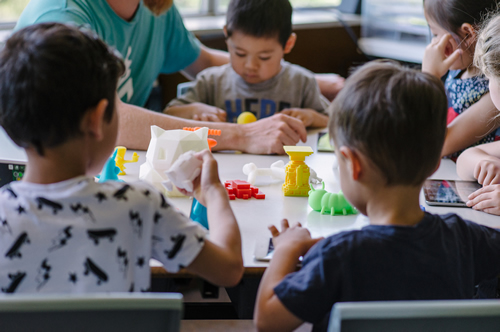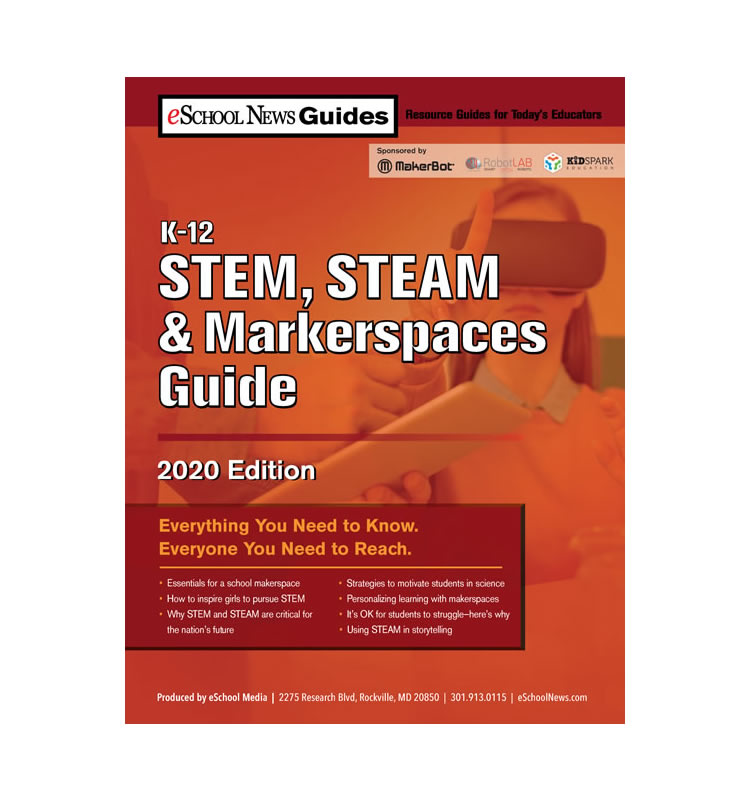Makerspaces and maker culture have quickly become a favorite of STEAM advocates, and new research shows that makerspaces can be highly effective at helping elementary students develop skills such as critical thinking, design thinking, and problem solving.
Research from Macquarie University in Australia demonstrates how, with proper training and professional development, teachers can harness makerspaces and improve teaching and learning outcomes.
From August 2017 to July 2018, Macquarie University’s Department of Educational Studies partnered with the NSW Department of Education, Carlingford West Public School, Parramatta East Public School, Oatlands Public School and Makers Empire, which produces a 3D platform for K-8 educators, for a research study on maker pedagogy and makerspaces in primary schools.
Related content: How to transform a library into a makerspace
The study examines how maker activities using 3D design and 3D printing technology could enhance learning and teaching outcomes. Teachers from three schools used Makers Empire’s Learning by Design professional development course and participating students used Makers Empire’s 3D modelling software.
Related Content:
eSchool News STEM, STEAM, & Makerspaces Guide
The eSchool News STEM, STEAM, & Makerspaces Guide is here! It features strategies to help you integrate STEM, STEAM, and makerspace education into classrooms, and it offers a look at how these tools engage students and give them valuable skills. A new eSchool News Guide will launch each month–don’t miss a single one!
Using the makerspaces led to higher student engagement, confidence, and determination to try new approaches to tough challenges, according to the report. Struggling students in particular seemed to to benefit from maker activities.
Many students (94 percent) said they want to pursue 3D design once they left school, either as a career or a hobby.
Ninety-seven percent of the students said they want to work with 3D design in the makerspaces again during future lessons.
Teachers participating in the study became more comfortable using technology and they increased their collaboration and flexibility with fellow teachers, likely as a result of proper professional development and training. In fact, the report found face-to-face workshops and online support significantly increased teacher confidence.
All 24 of the participating classroom teachers said they want to use 3D design-based makerspaces in future classes.
The researchers offered a number of recommendations to help schools create and support makerspaces and the teachers who use them:
1. Provide support for schools to ensure makerspaces are effective and integrated as they help students develop STEM skills, digital competencies, and 21st-century skills
2. Encourage teachers using makerspaces to strike a balance between explicit instruction and open-ended inquity, set authentic tasks, consider the design of teaching spaces, and actively guide group work processes
3. Offer coordinated professional development and learning opportunities to help teachers improve their knowledge of design-based learning
4. Ensure those professional development opportunities are well-structured, pedagogically grounded, hands-on and collaborative, and that they incorporate opportunities to explore new technologies
5. Identify strategies to address accessibility and distraction issues young children may encounter as they use makerspaces and 3D design software
6. Schools should be deliberate in the steps they take to provide the resources, spaces, and culture that supports makerspaces and maker-based learning
7. Schools should ensure teachers have enough time to properly design and implement maker-based lessons
8. Schools should engage not only staff, but parents and community stakeholders as they create makerspaces
9. Examine best practices around makerspace leadership
- Educators love their edtech, but want more training - April 18, 2024
- Friday 5: College and career readiness - April 12, 2024
- Cybersecurity: eSN Innovation Roundtable - April 11, 2024



